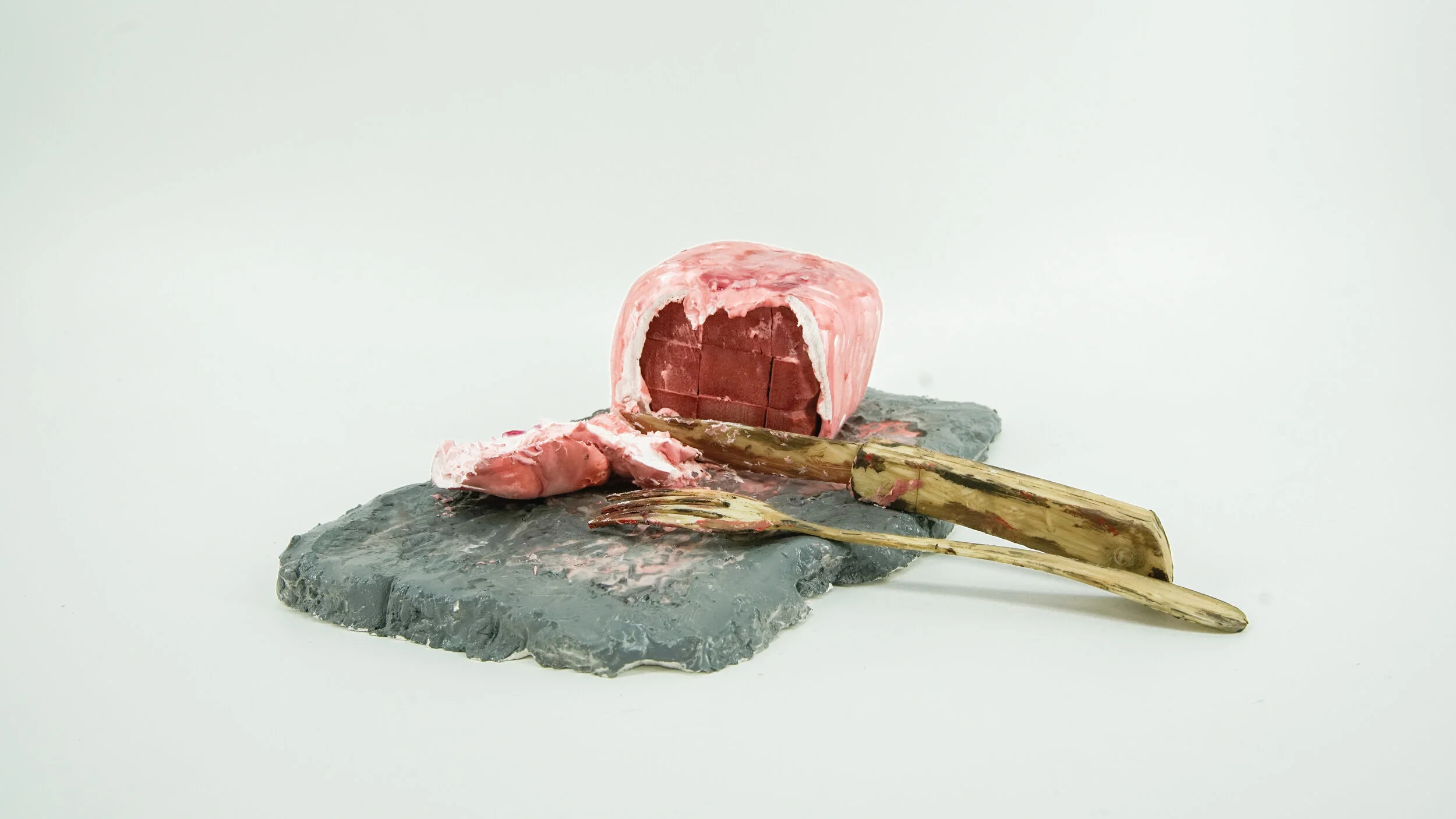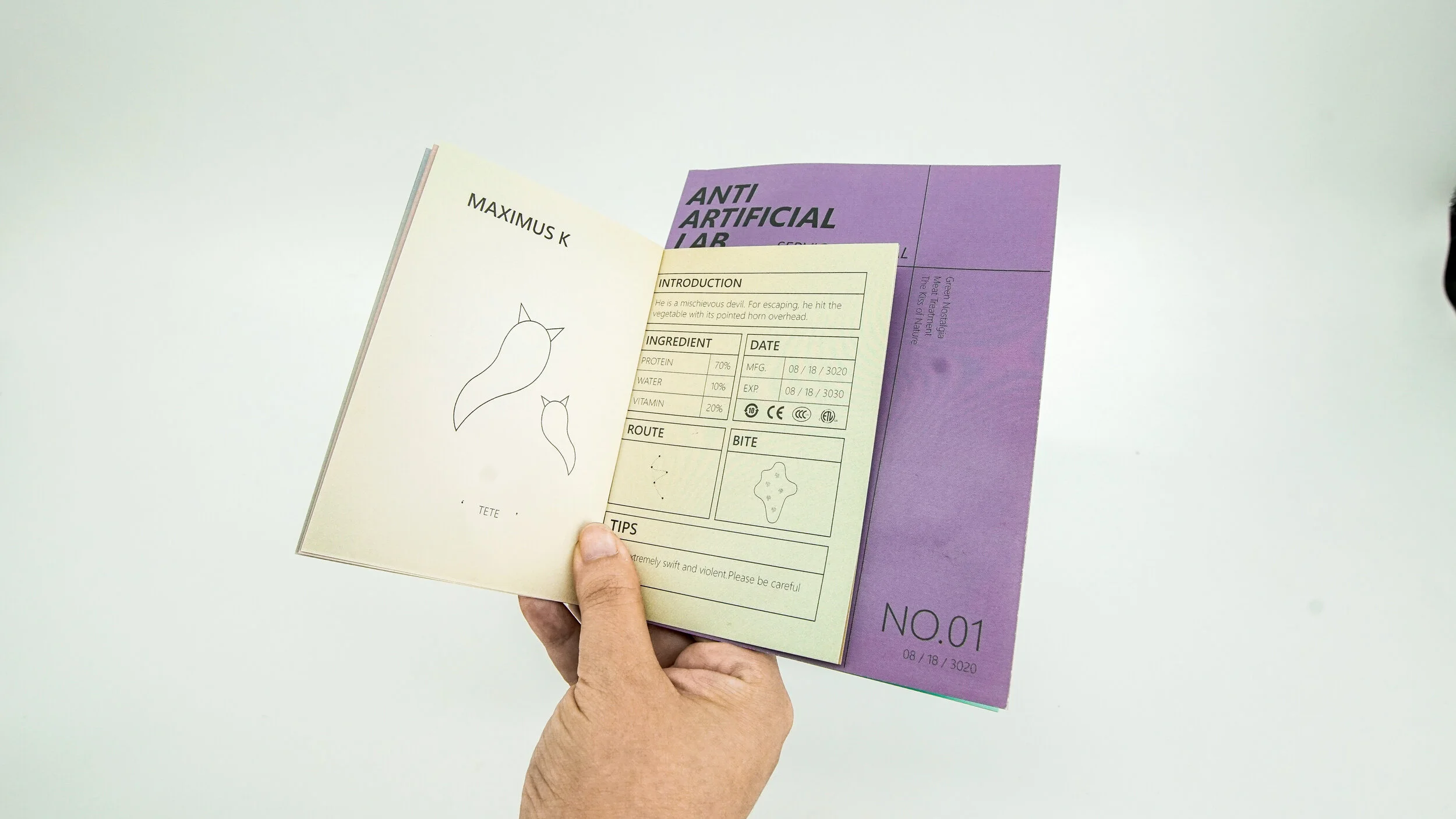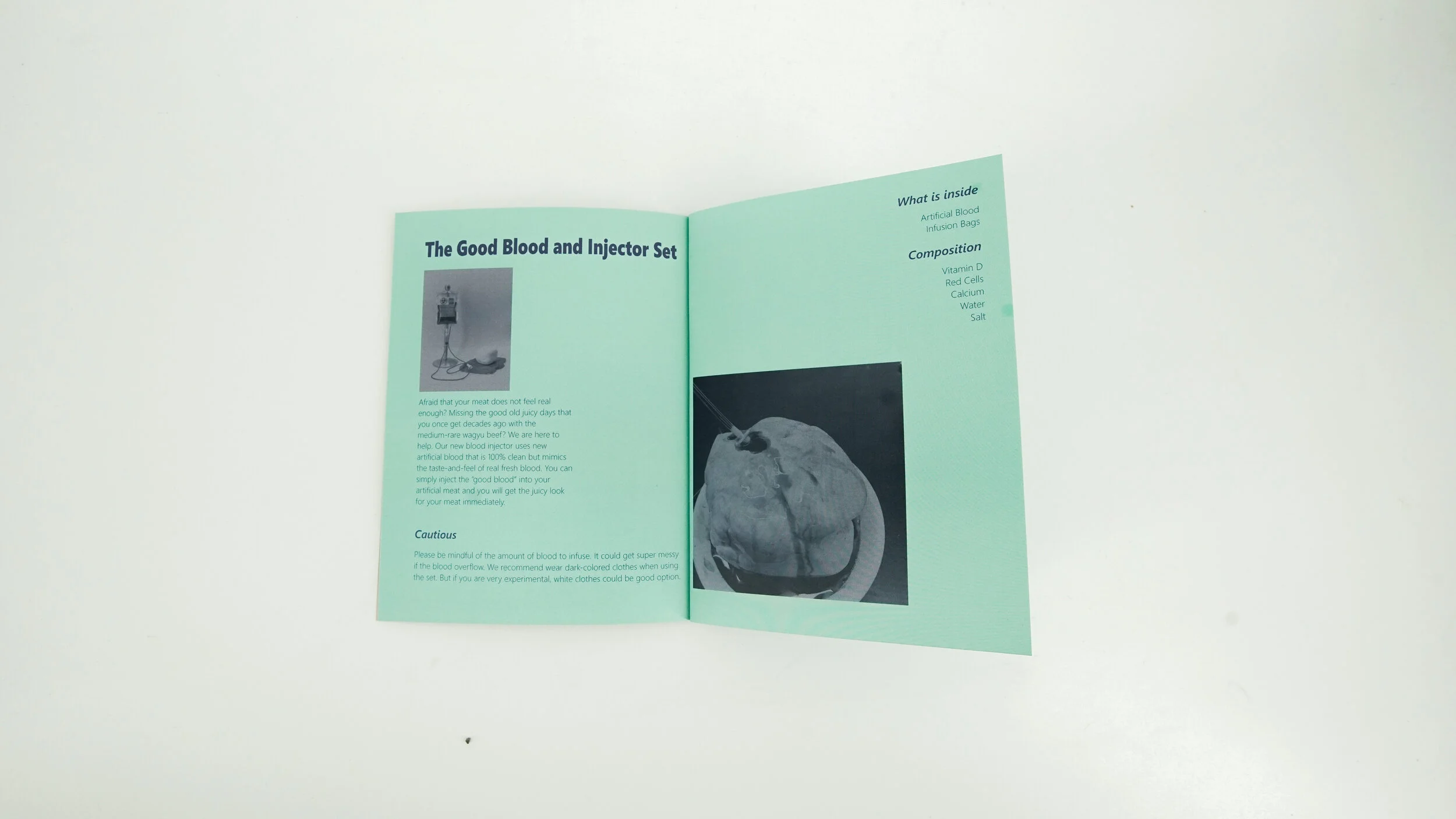Future Food Seasoning
Design technologies that help future urbanizers overcome cravings for nature
Duration
2 Weeks
June 2020
Project Feature
Speculative Design
Food Design
Prototyping and Modelling
Sustainability
My Role
Research & Strategy Lead
Concept and Story Design
Prototyping
Team
Yixi Liu
Jiyu Xuan
Xiye Chen
INTRO
A speculative project to provoke discussions around climate change and industrialism
This project envisions a future in which natural resources are depleted as a result of climate disruption, and only artificial food is possible to feed the planet. Will humans be satisfied with the “sustenance” - replacement of genuine food that industrial advancement made possible?
Our answer is no. We speculate that the future urbanizers will develop nostalgic feelings for the past and undamaged natural environment - the good old days when they could still enjoy fresh, naturally grown food.
Final Design
A set of future “seasonings” and “tablewares” that return artificially-made food to its natural state.
The products all feature a “de-industrialization” process that brings back bittersweet memories of a better ecological period. This emotion would serve as a motivator for ecological restoration in a post-modern society.
How we got there?
01 — Exploration
Identify Signals
To start, we looked up current trends and signals of emerging technologies and culture in the world and picked the ones most relevant to the food industry. This step helps us to have an initial understanding of the problem space and helps to inspire our next step.
Summary
In face of challenges such as climate disruptions and overpopulation, the technologically-driven food industry is booming in recent years as promising solutions to simulate entirely new closed-loop ecosystems for food production. The idea is to merge science disciplines to build indoor growing systems that could overcome natural limiting factors. 3D printed food, cellular agriculture, vertical farms, algae-based new food… you name it.
On the other hand, the worldwide environmental issues remain largely unsolved, carbon emissions not curbed, and climate change remains a controversial topic.
Predicting Future trends
Given the current trends and signals related to our topic of research, we conducted analysis and summarized the major trends in the world for shaping the worldview of our project and future design decisions.
Creating Future Wheel
If extreme cold weathers become the norm in the future, what will happen to people and society? We created a future wheel, first proposed by Jerome C. Glenn in 1977, to help us map out all the possibilities. This step helps us complete the world view and contexts for our design.
02 — Speculating the future
Our World
the Collapsed Mother Nature, Indoor Living, and Artificial Food
Due to global warming, extreme cold weather hit Northern Hampshire at an unprecedented level of intensity and frequency. As the ecosystems collapse, humans move indoors and struggle to sustain a livable environment through cutting-edge technology.
Artificially-manufactured fruits, vegetables, and meat become the norms
“Nature” becomes a past-term.
The Food Culture
Urbanite Nostalgic for the Natural World
Due to limited space and resources, all food is mass-produced in factories and later distributed to the markets. The highly-standardized food consists of the nutritions and taste that are the same in traditional meat and fruits.
However, future urbanizers are seduced by nature. Though bio-engineered food feeds the crowd, nostalgic feelings for the taste-and-feel of “nature” become trendy. People’s vision of “good food” shifts from a consideration of its nutrients and taste to the level of its “naturalness/Genuity.”
Inspirations
Movie - “Soylent Green”
Soylent Green is a 1973 American ecological dystopian thriller film. It portrays a world in which natural resources are depleted due to the cumulative effects of climate catastrophe, environmental pollution, and overpopulation. Soylent Industries produces artificially-produced food, but the products are in short supply. Sol Roth decides to end his life through euthanasia - he can watch the sequence of film clips that show the earth as it was long ago — forests, wild animals, rivers, and ocean life, before death.
03 — Ideate and Prototype
During the prototyping process, I am mainly responsible for creating the prototypes of the fruit and the vegetables.
04 — Final Design
05 — Reflection
In my past experience as a media studies scholar, I have practiced critical thinking in analyzing media artifacts. The process has been rewarding, as it always allowed me to think more critically about technologies instead of blindly following the trend. Yet, I used to do all that on paper, writing long essays that probably nobody else outside my field will have the chance to look at it.
I am therefore much drawn to speculative design. It uses the narrative power of artifacts to do the critical-thinking job well. This visual and imaginative presence is alone powerful enough to provoke critical thinkings on the possibilities of technologies - good or bad in the remote future. It also allows me to discover the power of design in asking questions rather than solving problems.


























